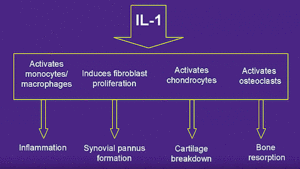How Do Stem Cells Work?
How Do Stem Cells Work?
By: Edward G. Loniewski, DO, FACOS, FAOAO
This is a very common question asked not only by our patients, but also many educated physicians using this therapy. After years and years of trying to understand this process myself, I have attempted to simplify this very complex and complicated system down to 3 easy to remember mechanisms. The problem with simplifying a complex system is that it can leave out some other minor systems at work, but if we want to take a 10,000 foot look at this mountain of information, I believe that you can begin to make more sense of this process by boiling this down to a few basic mechanisms. The goal is not to make anyone an expert, but rather just an informed consumer so you can make an educated and knowledgeable decision if this therapy may be a viable treatment for either yourself or your loved ones. Many great philosophers in the past such as Camus, Kierkegaard and Aristotle have suggested we narrow down complex systems into three reasons, examples or theories because it allowed the student to understand the subject in a coherent manner.
Before we talk about stem cells, we need to clarify that common stem cell therapies used in the United States contain a very small number of stem cells. Many treatment centers may only transfer a few thousand cells and thus, the mechanisms of action of these treatments are not due solely to the stem cells. Rather, they are due to the other nurturing biochemical compounds found around these cells. Therefore, bone marrow is very important in this process. Bone marrow is the natural home environment for stem cells in your body. This is where they are born, raised and utilized. Thus, we need to consider the contributions of the bone marrow products surrounding the stem cells such as Interleukin 1-B receptor antagonist (that was a mouthful) and Alpha 2 Macroglobulin as well as Transforming Growth Factor- Beta. These are important to help set the proper environment for stem cells to conduct their work. So, the title of this section is a bit misleading and should say “How does Cell Therapy Work?”
So, what are these three mechanisms of action? They are very easy to remember since they all start with R. This is what we call a pneumonic because they sound similar and are easier to remember. These mechanisms are:
- Reduce
- Restore
- Regenerate
We will take each one and explain how this mechanism relates to cell based therapies.
Reduce- Cell based therapies reduce the harmful biochemical storm in your joint. We normally have nice balance of specific biochemicals in our joints. They serve to help maintain the normal cell function of the joint. However, as we age, or with trauma or with specific inflammatory diseases of the joint, this chemical balance is upset and we have too many pro-inflammatory chemicals causing continued destruction. One of the most important biochemical families are the interleukins and especially interleukin-1-beta. This is normally used to help regulate our response to infection or inflammation. However, the production of this biochemical begins to rise and cause widespread inflammation and destruction of both cartilage and bone. Interleukin 1-B is the “Kingpin” or “Godfather” of these biochemicals and REDUCING IL-1 B will help restore this normal balance. Many biochemical pathways lead back to Interleukin-1 B and just like the Corleone family, when we start to investigate who is causing all this crime and destruction, many pathways lead back to the “Godfather” biochemical. Interleukin-1B controls the judges, the newspapers, and the police in New York City just like Don Corleone.
How is this done? Our own bone marrow contains a natural inhibitor of IL-1 B called Interleukin 1-B receptor antagonist. This is the antidote for the toxic effects of IL-1B and it is found intimately wrapped in the environment of your stem cells throughout your bone marrow. When we take your own bone marrow, there is a nice concentration of this natural inhibitor already present and connected to your stem cells. Race horses have used Interleukin 1-B Receptor Antagonist for the past 12 years to treat arthritis and improve their performance. In fact, this therapy is so effective and popular, one horses in the 2017 Kentucky Derby was named IRAP which stands for the IL-1 B receptor antagonist. 
Thus, Bone Marrow Concentrate taken from your own pelvis can REDUCE the biochemical storm happening in your joint naturally and effectively. Without this reduction, there is little hope that any cartilage cells will survive and continued destruction will occur.
Our next mechanism involves Restoring the normal cell to cell communication of a joint.
Your joint is an organ just like a kidney, brain or heart. An organ is a group of specialized cells working together to perform a specific function. For example, your kidney cells function together to filter out toxins in your blood and help maintain healthy blood pressure. Your joint has specific cells designed to allow smooth and efficient movement of your body. To accomplish this goal, the specialized cells need to talk to one another through a special communication mechanism for one cell to talk to another local cell. This is called paracrine signaling. A diseased joint has a dysfunction of this signaling due to guess who….”The Godfather.” In a normal joint, cartilage cells need to talk to other cartilage cells to help with their normal function. Bone cells need to talk to other bone cells to do the same. When Interleukin 1-B is elevated, tunneling through the diseased bone next to your joint occurs and bone cells start to talk to cartilage cells rather than other bone cells through a mechanism called “cross talk”.
This cross talk is just like someone trying to give you directions to a restaurant when everyone else is talking very loudly in the background. Both parties on the line become frustrated and eventually hang up. Your bone and cartilage cells do the same and become dysfunctional unable to perform the specialized functions they were born to do because they cannot communicate effectively with each other. The bone marrow concentration helps RESTORE this normal cell to cell signaling by reducing the Interleukin-1 B and shutting down the tunnels between bone and cartilage. Over time, the small tunnels are shut down and cartilage cells now talk only to cartilage cells so they can function like a normal organ. Normal tissue function returns which in turn RESTORES the normal function of the joint as an organ.
Finally, we can discuss Regenerate as the third, but least important mechanism of cell therapy. Although many so called stem cell clinics claim the regenerative properties of their therapy is the most important mechanism, as we can see from the two previous mechanisms, unless you have a stable environment first, there is no reason to regenerate any tissue because it will be either destroyed by the biochemical storm caused by the Godfather or if by some miracle, there is tissue growth, the cells won’t be able to function as a normal organ because of the loss of paracrine signaling or cell to cell communication. So, cell based therapies REDUCE this biochemical imbalance and RESTORE normal cell to cell communication setting the stage for proper REGENERATION.
Think about this process compared to another very common disease in our country. Alcoholism is very prevalent in our society. I don’t really need to remind anyone of it’s prevalence. Ironically, just about the same number of people in the United States are affected by Arthritis as Alcoholism which is about 28 million. If we look at one of the most effective treatments for alcoholism, we can see a parallel to the three mechanisms of cell based therapies. Alcohol recovery programs normally begin with the removal of the harmful chemicals, or alcohol, causing the problem. 
In cell based therapy, broken and dysfunctional cell to cell communication is restored. Once the harmful chemical has been REDUCED and the communication RESTORED, now the family can thrive and function again and grow in a stable, non-toxic and loving environment. Your joint is the same with the REDUCED toxic chemicals and in a stable RESTORED environment promoting the REGENERATION of new tissue. The amount of new tissue may be very small in relation to the dramatic effects of reducing the toxins and restoring the normal function of the cells, but it is still a property of the mesenchymal stem cells delivered in the bone marrow concentrate. There is little relationship between the amount of tissue regenerated and the relief of your pain. However, there is a direct and linear relationship between levels of Interleukin-1 beta and the severity of your arthritic symptoms. Thus, reducing this harmful biochemical is paramount to the restoration and regeneration of your joint.
To prove this point, think of the last time you took a pill for your arthritis pain. Not everyone responds to these pills, but most people have some relief for a brief period of time after taking such a medication. Pills such as Aleve or Motrin have absolutely no effect on regenerating new cartilage tissue. Yet, you may have experienced some relief for about 4 to 6 hrs. Have you ever wondered how this happened? From a biochemical perspective, this medication reduced one of the biochemical pathways causing pain in your joint. Yet, this is pill in your stomach and not in your joint and it did not regenerate any new tissue and may have contributed to some further tissue destruction, but it provided some relief! Bone marrow concentrate stem cell therapy provides long term REDUCTION of the most important “Godfather” biochemical pathways for years and it RESTORES normal cell to cell communication leading to an optimal environment for the icing on the cake which is REGENERATION of some tissue.
I hope this simple explanation has accomplished its goal of making you a more informed and educated consumer and hopefully you can now understand if this therapy may be helpful for your our your loved one’s joint. The use of cell therapy can help your body naturally reduce a harmful chemical imbalance; restore cell to cell communication; and regenerate new tissue all adding up to a joint with lower pain and higher function without side effects or the inconvenience and risk of major surgery.






